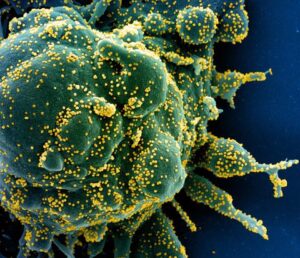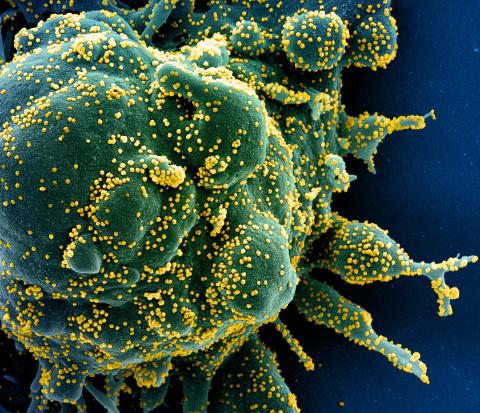March 31, 2022
The general concept of herd immunity implies that transmission of an infectious agent can be blunted, except for sporadic outbreaks, because a certain proportion of the population is already protected through vaccination or prior infection. The authors explain how the scientific understanding of herd immunity and its applications to various diseases have evolved over time. High levels of herd immunity have enabled the United States to largely control polio and measles—two diseases caused by viruses that have not undergone significant evolution. However, the authors note, the benefits of achieving herd immunity thresholds have been less successful with respiratory viruses such as influenza, which continually mutate.
Dr. Fauci and his colleagues write that achieving classical herd immunity against SARS-CoV-2 is unlikely, due to a combination of factors that include features of the virus as well as current societal dynamics. These include the virus’ ability to continually mutate to new variants; asymptomatic virus transmission, which complicates public health control strategies; the inability of prior infection or vaccination to provide durable protection against reinfection; suboptimal vaccination coverage; and adherence to non-pharmacologic interventions.
However, the authors note, controlling COVID-19 without major disruptions to society is now achievable because of widespread background immunity via prior infection or vaccination, booster shots, antiviral drugs, monoclonal antibody therapies and widely available diagnostic tests. Research to develop pan-coronavirus vaccines, which could protect against multiple coronaviruses or at least multiple SARS-CoV-2 variants, remains crucial.
“Living with COVID is best considered not as reaching a numerical threshold of immunity, but as optimizing population protection without prohibitive restrictions on our daily lives,” the authors conclude.
ARTICLE:
DM Morens et al. The concept of classical herd immunity may not apply to COVID-19. The Journal of Infectious Diseases DOI: 10.1093/infdis/jiac109 (2022).
WHO:
Dr. Fauci and Dr. Morens are available for comment.

Colorized scanning electron micrograph of an apoptotic cell (green) heavily infected with SARS-COV-2 virus particles (yellow), isolated from a patient sample. Image captured at the NIAID Integrated Research Facility (IRF) in Fort Detrick, Maryland.
Credit: NIAID


